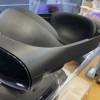Programmable chips turning Azure into a supercomputing powerhouse
Microsoft is embarking on a major upgrade of its Azure systems. New hardware the company is installing in its 34 datacenters around the world still contains the mix of processors, RAM, storage, and networking hardware that you'll find in any cloud system, but to these Microsoft is adding something new: field programmable gate arrays (FPGAs), highly configurable processors that can be rewired using software in order to provide hardware accelerated implementations of software algorithms.
The company first investigated using FPGAs to accelerate the Bing search engine. In "Project Catapult," Microsoft added off-the-shelf FPGAs on PCIe cards from Altera (now owned by Intel) to some Bing servers and programmed those FPGAs to perform parts of the Bing ranking algorithm in hardware. The result was a 40-fold speed-up compared to a software implementation running on a regular CPU.
A common next step after achieving success with an FPGA is to then create an application specific integrated circuit (ASIC) to make a dedicated, hardcoded equivalent to the FPGA. This is what Microsoft did with the Holographic Processing Unit in its HoloLens headset, for example, because the ASIC has greatly reduced power consumption and size. But the Bing team stuck with FPGAs because their algorithms change dozens of times a year. An ASIC would take many months to produce, meaning that by the time it arrived, it would already be obsolete.









































































